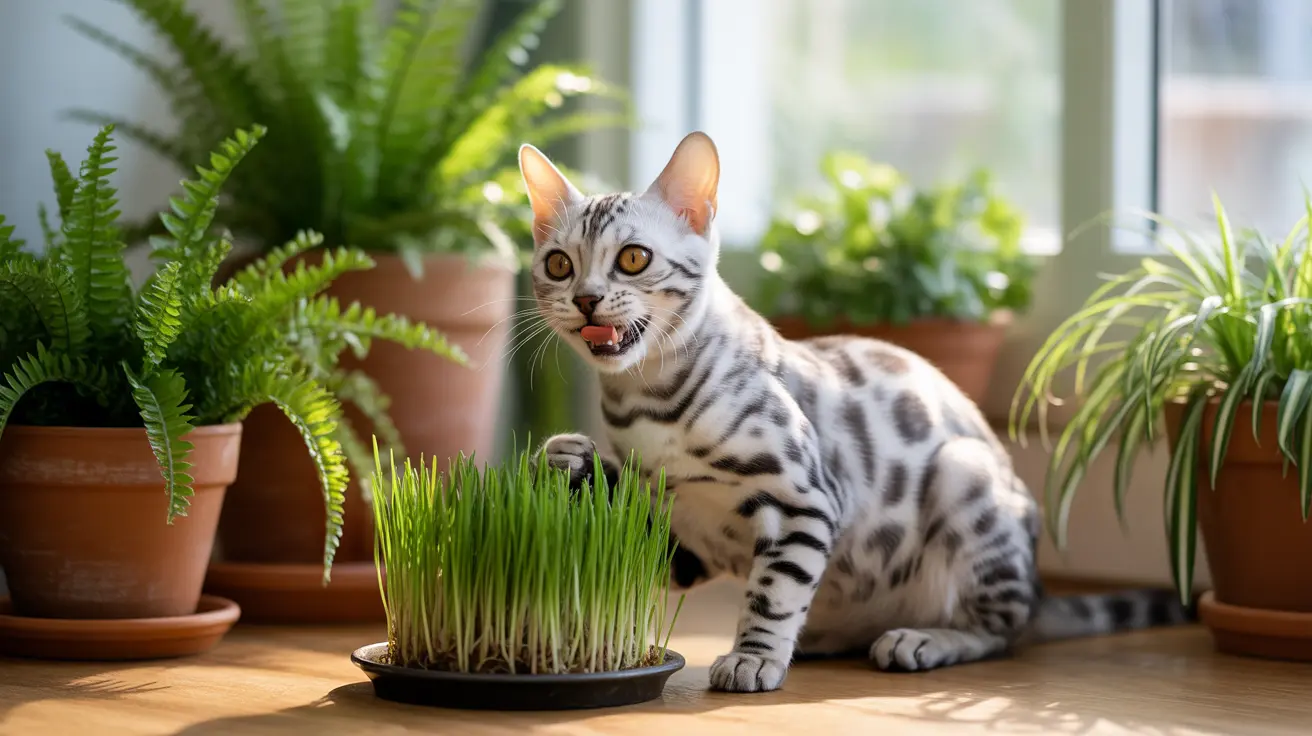What Is Wheatgrass and Why Do Cats Like It?
Wheatgrass consists of young wheat plant shoots harvested before the grain forms. It's naturally gluten-free and packed with vitamins, minerals, and chlorophyll. Cats are naturally drawn to wheatgrass because it satisfies their instinctual grazing behavior and provides sensory stimulation.
Many cats actively seek out grass to chew on, and wheatgrass offers a safe, controlled way to fulfill this natural urge. Unlike common lawn grass, which may be treated with harmful chemicals, properly grown wheatgrass provides a safe alternative for indoor cats.
Health Benefits of Wheatgrass for Cats
Digestive Support
Wheatgrass can aid your cat's digestive system in several ways. The natural fiber helps move hairballs through the digestive tract and can assist with regular bowel movements. Some cats may even use it to naturally induce vomiting when they need to clear their stomach of indigestible materials.
Nutritional Value
This superfood is rich in essential nutrients including:
- Vitamins A, C, E, and K
- B-complex vitamins
- Minerals like iron and magnesium
- Chlorophyll
- Amino acids
- Antioxidants
Environmental Enrichment
For indoor cats, wheatgrass provides mental stimulation and a safe outlet for natural grazing behaviors. It can help prevent boredom and redirect cats from chewing on potentially toxic houseplants.
Safety Considerations and Risks
While wheatgrass is generally safe for cats, there are some important considerations to keep in mind:
- Moderation is key - too much can cause digestive upset
- Always use organic, pesticide-free wheatgrass
- Monitor for any allergic reactions
- Trim long blades to prevent choking hazards
- Remove access if your cat shows signs of overconsumption
How to Introduce Wheatgrass to Your Cat
Start slowly when introducing wheatgrass to your cat's routine. Place a small amount in an accessible location and observe your cat's reaction. Some cats may take to it immediately, while others might need time to adjust.
Growing your own wheatgrass at home ensures a fresh, safe supply. Use organic seeds and clean soil, and keep the growing area out of reach of curious paws until the grass is ready for consumption.
Frequently Asked Questions
Can cats safely eat wheatgrass, and how much should I give them?
Yes, cats can safely eat wheatgrass. Offer a few blades daily and monitor their reaction. Most cats will self-regulate their intake, but remove access if they show signs of overconsumption.
What are the main health benefits of wheatgrass for cats?
Wheatgrass provides dietary fiber, essential nutrients, aids in hairball control, supports digestive health, and offers mental stimulation for indoor cats.
Could eating wheatgrass cause any risks or side effects in my cat?
While generally safe, potential risks include digestive upset from overconsumption, choking hazards from long blades, and rare allergic reactions. Always use organic wheatgrass and monitor your cat's response.
How does wheatgrass help with my cat's digestion and hairball control?
The natural fiber in wheatgrass helps move hairballs through the digestive tract and supports regular bowel movements. It can also help cats naturally clear their stomachs when needed.
What's the best way to introduce wheatgrass to my indoor cat's diet?
Start with small amounts, use organic wheatgrass, and observe your cat's reaction. You can grow it at home or purchase it from pet stores. Place it in an accessible location and allow your cat to explore it naturally.
Conclusion
Wheatgrass can be a beneficial addition to your cat's environment when offered appropriately. While it shouldn't replace their regular diet or veterinary care, it can provide valuable nutritional benefits and environmental enrichment. Remember to introduce it gradually, monitor your cat's response, and always use organic sources to ensure safety.






